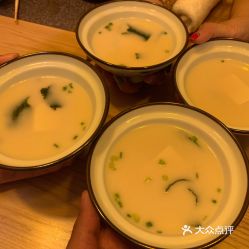
Oma

kase: The Art of Letting Go and Trusting the Chef
Omakase is a Japanese word that roughly translates to "I'll leave it up to you" or "I trust you". It's a culinary experience that has become increasingly popular in the Western world in recent years, particularly in high-end sushi restaurants. At its core, omakase is about letting go of control and trusting the chef to provide you with a gastronomic adventure that is unique, surprising and delicious.
The concept of omakase can be traced back to the traditional Japanese tea ceremony, which dates back to the 16th century. In this ritual, the host prepares and serves a bowl of tea to guests according to established customs and traditions. The guests are expected to appreciate the tea in a contemplative and respectful manner, acknowledging the aesthetic and cultural value of the experience.
The philosophy behind the tea ceremony is also reflected in omakase. It's not simply about eating a meal, but about appreciating the craftsmanship, creativity and skill of the chef. The customer becomes a participant in a culinary performance, where the chef is the artist and the ingredients are the medium. The goal is to create a harmonious and memorable experience that transcends mere sustenance.
Omakase is not for everyone, though. It requires a certain level of openness, curiosity and adventurousness. You have to be willing to try new things, to embrace the unexpected and to surrender your preconceptions. You also have to be willing to pay a premium price, as omakase meals tend to be quite expensive. But for those who are willing to take the leap of faith, the rewards can be extraordinary.
One of the key elements of omakase is the emphasis on fresh, seasonal and high-quality ingredients. The chef selects only the freshest fish, vegetables, fruits and grains, often sourced from local or artisanal producers. They pay attention to the texture, flavor, color and aroma of each ingredient, and try to balance them in a harmonious and aesthetically pleasing way. They also experiment with different cooking techniques, such as grilling, steaming, roasting, braising, smoking or fermenting, to enhance the complexity and depth of the flavors.
Another important aspect of omakase is the personalized service and attention to detail. The chef usually works in front of the customers, creating the dishes in real time and explaining the ingredients and techniques involved. They may also adjust the menu based on the customer's preferences, dietary restrictions or allergies. The waiters and other staff are also trained to provide exceptional hospitality, anticipating the customer's needs and preferences, and making them feel pampered and appreciated.
Ultimately, omakase is about more than just eating sushi or other Japanese dishes. It's about experiencing a cultural and culinary art form that has deep roots in Japanese history and aesthetics. It's about being part of a ritual that celebrates the beauty, simplicity and elegance of nature, and the human creativity that elevates it to a higher level. It's about connecting with the essence of Japanese culture, and experiencing it through the senses and the soul.
So if you have the chance to try omakase, don't hesitate. Let go of your expectations, and trust the chef to take you on a journey of flavor, texture, aroma and color. Allow yourself to be surprised, excited, delighted and moved. And in that moment of culinary bliss, you might just discover a deeper appreciation of the art of food and the art of living.